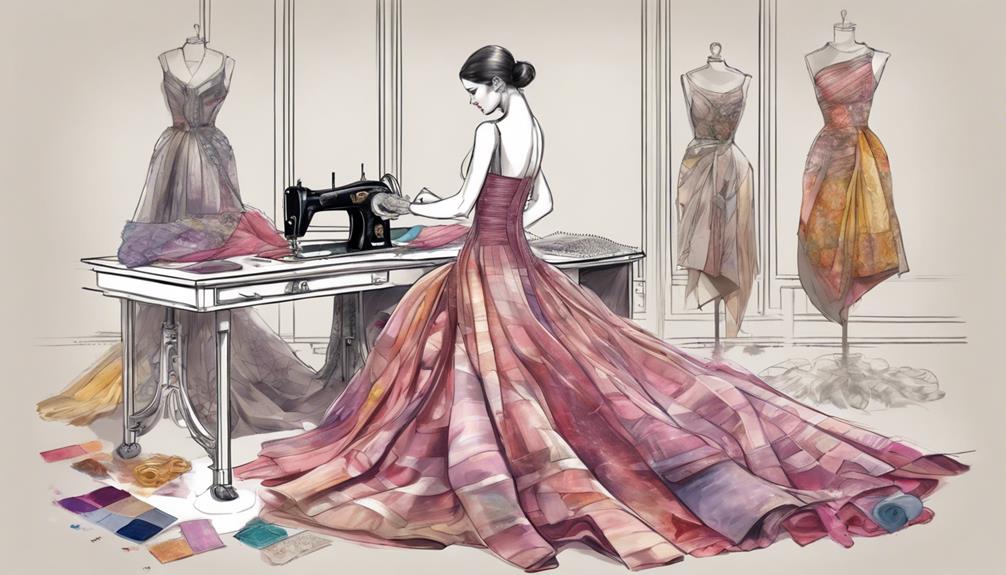Fashion design is a multifaceted field that blends creativity with functionality, catering to the ever-changing preferences of consumers worldwide. From conceptualizing unique designs to translating them into wearable pieces, fashion designers play a pivotal role in shaping the way we dress and express our identities. As an art form deeply intertwined with culture and innovation, fashion design offers a captivating exploration into the intersection of tradition and modernity. The intricate processes involved in bringing a garment from sketch to runway underscore the complexity and allure of this dynamic industry, leaving us pondering the boundless possibilities that await at the forefront of style evolution.
Key Takeaways
- Fashion design involves creating garments and accessories reflecting cultural influences and individual expression.
- Fashion designers anticipate consumer desires, consider elements like line, color, and texture, and create clothing with functionality.
- The industry evolves with trends focusing on sustainability, inclusivity, and ethical production methods.
- Fashion design encompasses haute couture for exclusivity and ready-to-wear collections for everyday wear.
Understanding Fashion Design
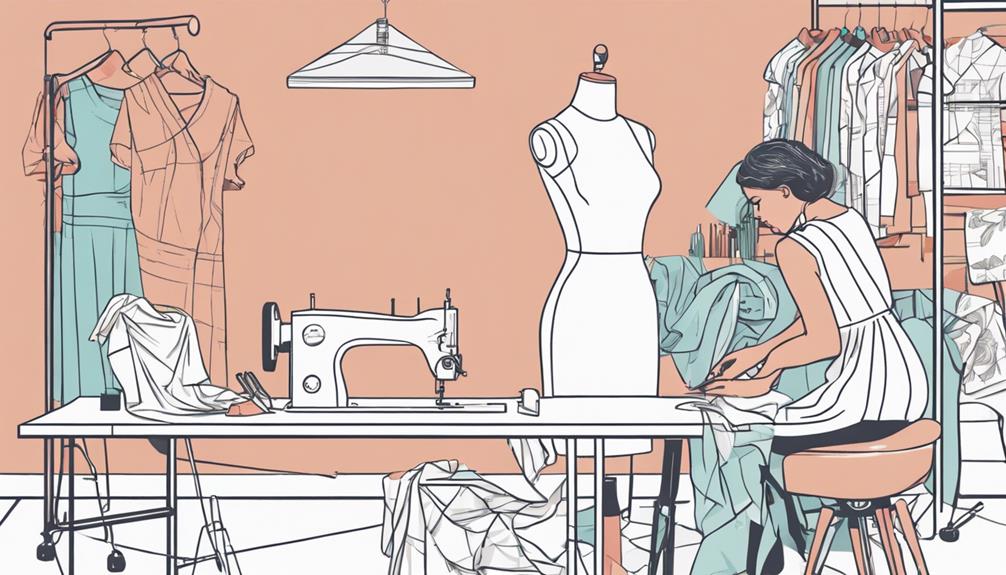
The comprehension of fashion design encompasses the intricate artistry involved in creating garments, accessories, and lifestyle pieces that reflect cultural influences and individual expression. Fashion design is a multifaceted discipline that involves the conceptualization, design, and production of clothing and accessories. Within the realm of modern fashion design, two main categories have emerged: haute couture and ready-to-wear.
Haute couture collections are characterized by their exclusivity and customization, with garments tailored to individual clients. These collections are typically showcased twice a year, featuring a minimum of 35 meticulously crafted outfits each time. On the other hand, ready-to-wear collections cater to a broader market, offering standard-sized garments that are further divided into designer/createur and confection categories. Both haute couture and ready-to-wear collections play a significant role in shaping global fashion trends and are prominently displayed on international catwalks, where designers showcase their latest creations to captivate audiences worldwide. The diverse range of lifestyle pieces created within the realm of fashion design highlights the creativity and innovation inherent in this dynamic industry.
Evolution of Fashion Trends
Fashion trends have undergone significant shifts over the years, influenced by a variety of cultural factors. These changes reflect the evolving tastes and preferences of society, as well as advancements in technology and globalization. Understanding the evolution of fashion trends provides valuable insights into the dynamics of the industry and the societal influences shaping our clothing choices.
Trend Shifts
Amidst societal shifts and technological advancements, the trajectory of fashion trends undergoes a continual evolution, reflecting the dynamic interplay of consumer preferences and industry innovations. Trend shifts in fashion design now pivot towards sustainable practices, inclusive designs, and gender-neutral fashion. Consumers are increasingly drawn to ethically produced garments that align with their values, prompting brands to prioritize ethical production methods. Furthermore, the industry is embracing diverse representation, moving away from traditional standards to showcase a more inclusive range of models and designers. This evolution signifies a significant departure from the past, indicating a more conscious and forward-thinking approach to fashion that resonates with the modern consumer's desire for authenticity and social responsibility.
Cultural Influences
In the realm of fashion design, the evolution of current trends is intricately intertwined with the ever-changing tapestry of cultural influences. Fashion trends evolve based on historical events, societal norms, and artistic movements, reflecting changing cultural values and attitudes. Designers play a pivotal role in shaping these trends by drawing inspiration from a diverse range of traditions and customs. Cultural diversity within the fashion industry fosters inclusivity and innovation, leading to the fusion of various cultural elements in design. Globalization further amplifies this phenomenon, creating unique styles that showcase the interconnectedness of different societies. Through cultural influences, fashion design not only mirrors societal changes but also promotes cross-cultural appreciation and understanding.
Creative Process of Designing
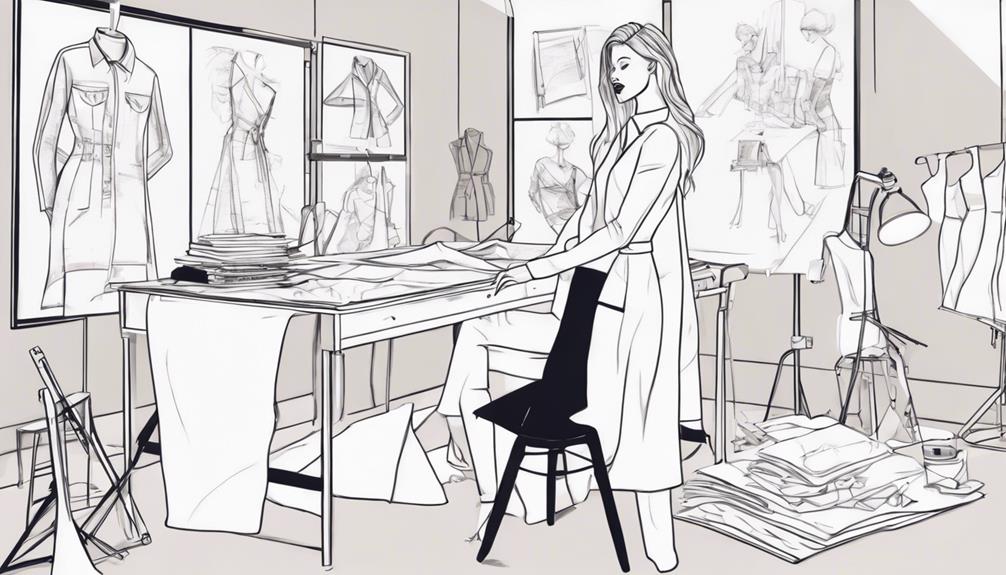
Engaging in the creative process of fashion design involves a strategic approach to envisioning and conceptualizing clothing, accessories, and lifestyle products. Designers must anticipate changes in consumer desires and trends throughout the design process and garment production. This entails carefully considering functionality and the specific needs of the consumers when creating individual garments. Fashion designers work with a diverse range of materials, colors, patterns, and styles to bring their designs to fruition. The process often begins with a vision, followed by sketching the designs on paper or using computer-aided design tools. Subsequently, prototypes are created and tested on models to ensure functionality and practicality in real-life settings. By incorporating elements that cater to the lifestyle products consumers seek, designers can create clothing and accessories that not only look aesthetically pleasing but also serve a purpose and meet the demands of the market.
Elements of Clothing Design
When crafting garments, fashion designers strategically utilize elements such as line, proportion, color, and texture to create aesthetically pleasing and functional clothing. These elements work together harmoniously to bring a design to life, influencing the overall aesthetic and appeal of the garment.
- Line: Lines in clothing design can be used to create visual interest, define shapes, and guide the viewer's eye. Horizontal lines can imply width, vertical lines can suggest height, while diagonal lines can add a sense of movement and dynamism to a garment.
- Proportion: Proportion is vital in ensuring that different elements of a design harmonize with each other. It involves the relationship between various parts of the garment and how they contribute to the overall look and feel.
- Color and Texture: The choice of color and texture can completely transform the mood and style of a garment. Colors evoke emotions and can be used to highlight features, while textures add depth and tactile appeal to the design.
Impact of Fashion Industry
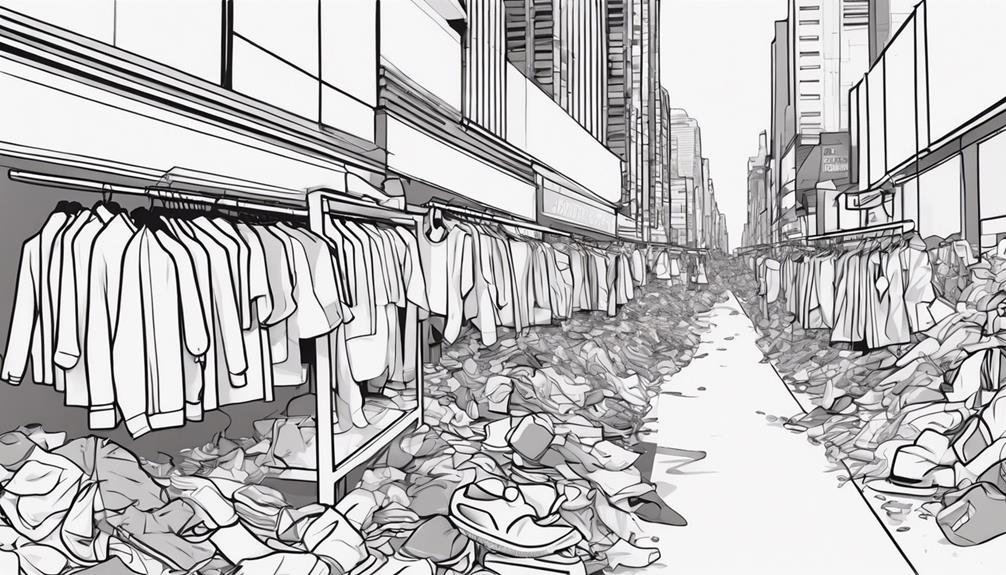
The impact of the fashion industry encompasses its economic influence, environmental concerns, and the role of social media. Fashion's economic power extends from production to retail, shaping global markets and consumer behavior. Environmental sustainability and social media platforms play pivotal roles in reshaping industry practices and consumer perceptions.
Economic Influence of Fashion
The economic significance of the fashion industry extends far beyond aesthetic expression, playing a fundamental role in influencing global economies and cultural identities.
- High fashion and luxury brands contribute significantly to the global economy through sales, investments, and job creation.
- Fashion capitals such as New York City, Paris, Milan, and London serve as hubs for creativity, innovation, and trade, impacting global fashion trends.
- The fashion industry fosters cultural identity by incorporating diverse traditions, styles, and narratives into designs, reflecting the richness of global heritage.
Environmental Concerns in Fashion
Amidst the glamour and creativity of the fashion industry lies a pressing concern that demands attention – the environmental impact of fashion production. The fashion industry is a significant contributor to environmental degradation, with fast fashion practices leading to high carbon emissions, water pollution, and textile waste. To address these issues, sustainable fashion practices are being adopted, focusing on using eco-friendly materials and promoting ethical production methods. Consumers are increasingly aware of the environmental impact of their fashion choices, leading to a rise in demand for sustainable and eco-conscious brands. Collaborations between designers and environmental organizations are also playing a crucial role in promoting eco-friendly practices and raising awareness about the impact of fashion on the environment.
Social Media's Role
Transformation brought about by social media has revolutionized the fashion industry, allowing designers to showcase their work globally and influencers to shape trends and consumer preferences. Social media plays a pivotal role in the democratization of fashion, breaking down traditional barriers and providing opportunities for emerging designers to gain visibility. The influence of social media on fashion trends is undeniable, with influencers wielding significant power in shaping what is considered stylish and desirable. Brands utilize platforms like Instagram, TikTok, and Pinterest to not only engage with their audience but also to promote new collections and drive sales. The global showcase facilitated by social media has transformed the way fashion is consumed and perceived, making it more inclusive and accessible to a wider audience.
Role of Fashion Designers
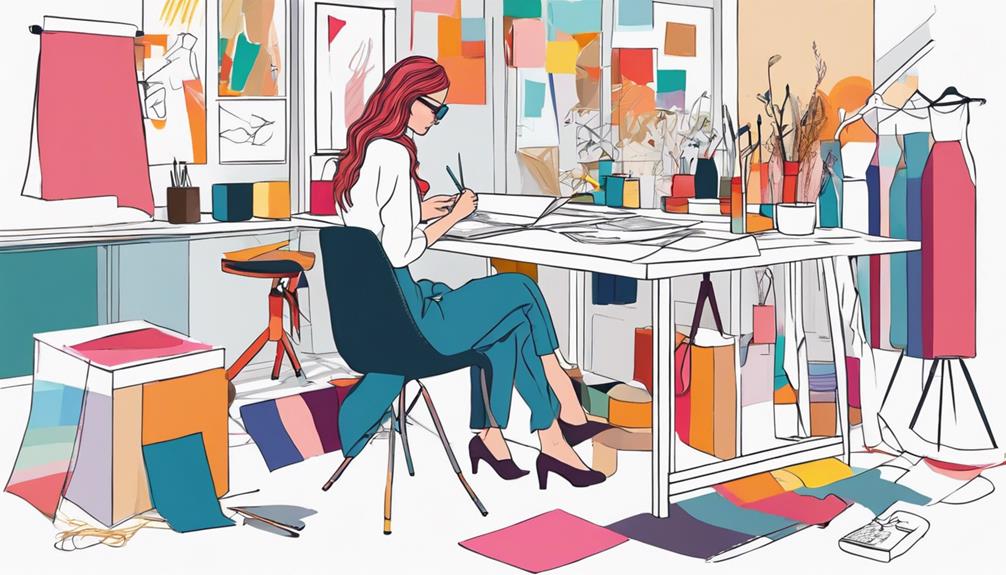
In the dynamic world of fashion, fashion designers play a pivotal role in merging artistry with practicality to create innovative clothing and accessories. Fashion designers work meticulously to anticipate and influence fashion trends, translating them into wearable pieces for consumers. Design is the art through which they express their creativity and bring unique ideas to life. To succeed in their field, designers must be able to research and interpret trends, evaluate materials, models, styles, and colors, and create high-fashion products suitable for special occasions. Below is a table summarizing the key responsibilities and skills required for fashion designers:
| Responsibilities | Skills | Trends | Creativity |
|---|---|---|---|
| Research fashion trends | Creativity | Anticipate future trends | Artistic vision |
| Evaluate materials | Attention to detail | Influence fashion market | Innovation |
| Design unique styles | Technical skills | Analyze consumer needs | Problem-solving abilities |
Designing Haute Couture
Fashion designers specializing in haute couture meticulously craft custom-sized collections twice a year, each consisting of a minimum of 35 outfits, showcasing exquisite craftsmanship and attention to detail. Haute couture designs are the epitome of luxury and exclusivity, tailored to the individual measurements and preferences of clients who seek the highest level of personalized fashion. These designers work closely with skilled artisans and use only the finest materials to bring their creative visions to life. The Chambre Syndicale de la Haute Couture in France plays a crucial role in upholding the standards of haute couture, ensuring that fashion houses adhere to strict criteria to maintain the integrity of this prestigious craft. The term 'haute couture' is legally protected, safeguarding the authenticity and quality of these custom-made creations. Fashion houses producing haute couture must meet rigorous requirements set by the Chambre Syndicale de la Haute Couture, underscoring the significance of this esteemed title in the world of high fashion.
- Haute couture designs are made to order for individual customers, offering a personalized and luxurious experience.
- The Chambre Syndicale de la Haute Couture establishes and maintains the standards for haute couture in France.
- Legal protection of the term 'haute couture' ensures the exclusivity and quality of these custom-sized creations.
Crafting Ready-to-Wear Styles
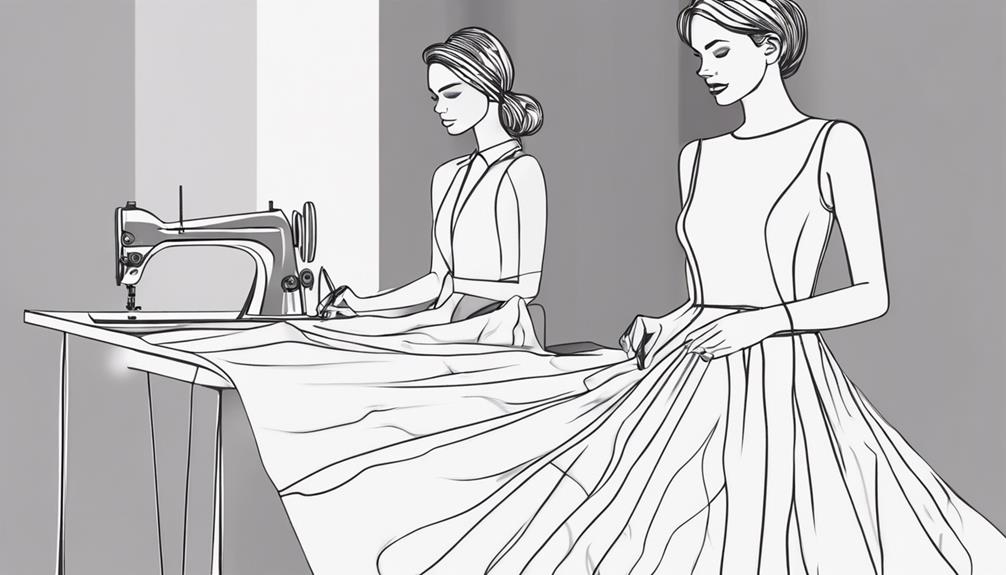
Crafting ready-to-wear styles involves designing practical and versatile outfits suitable for everyday wear. Tailoring these garments for mass production ensures a consistent quality and fit across various sizes. This process requires a meticulous balance between incorporating current trends and ensuring the functionality and comfort of the clothing items.
Designing Everyday Outfits
Developing everyday outfits for the mass market involves creating standard-sized garments that cater to a wide audience through seasonal ready-to-wear collections. Designers in this category focus on a wide range of casual and everyday wear options, utilizing specific production techniques tailored for the ready-to-wear market.
- Designers work with a variety of materials to ensure comfort and durability in everyday outfits.
- Ready-to-wear collections are designed to be accessible and affordable for a broad consumer base.
- The production process for these garments involves standardized sizing to fit a range of body types effectively.
Tailoring for Mass Production
In the realm of fashion design, tailoring for mass production involves creating standardized ready-to-wear styles tailored to suit the general market's preferences and demands efficiently. Designers in this field focus on producing standard-sized garments in larger quantities for the mass market. Ready-to-wear styles offer accessibility and affordability compared to haute couture designs, making them appealing to a broader range of customers. By utilizing efficient production techniques, such as mass production methods, designers can streamline the process of creating and distributing these fashion pieces. This approach allows for the swift manufacturing of garments that cater to the diverse tastes and needs of consumers, ultimately shaping the landscape of the fashion industry.
Balancing Style and Function
Balancing style with functionality is a fundamental principle in the creation of ready-to-wear fashion designs. Designers in this category strive to produce standard-sized garments suitable for mass production to cater to a broader consumer market. To achieve this balance effectively, designers often consider the following:
- Versatility: Ready-to-wear styles are crafted to be versatile, allowing consumers to easily incorporate them into their everyday wardrobes.
- Accessibility: These designs aim to be accessible to a wide range of consumers in terms of both style and price point.
- Efficiency: Ready-to-wear garments are produced using simpler manufacturing techniques, ensuring cost-effectiveness and efficiency in the production process.
Influence of Mass Market Trends
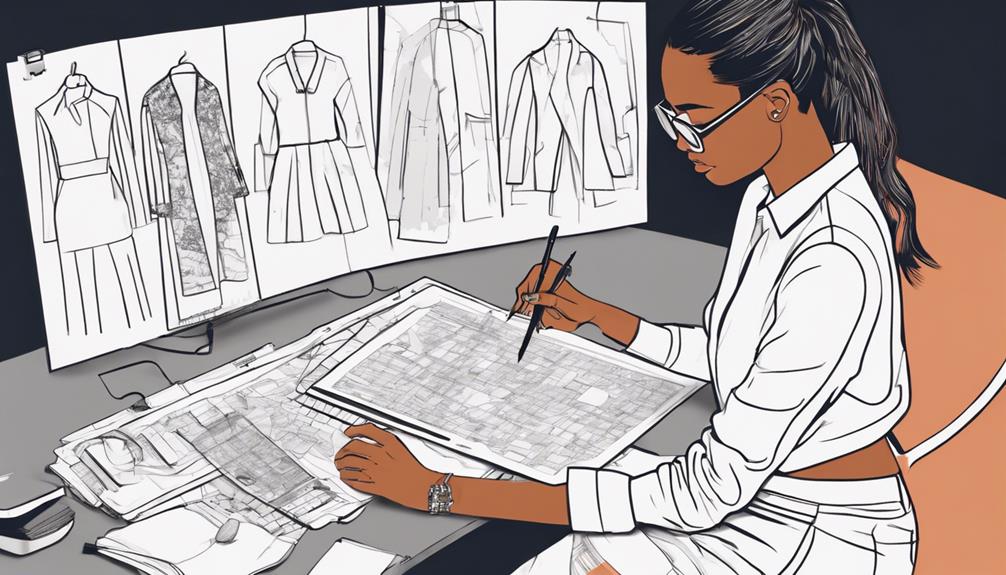
An integral aspect of the fashion industry lies in understanding and adapting to the influence of mass market trends on design and production processes. Mass market trends focus on catering to a wide range of customers by utilizing affordable fabrics and simpler production techniques to create clothing and accessories on a large scale for the general public. These trends are shaped by consumer demand, popular culture, and economic factors, aiming to produce commercially viable products that are trendy and accessible to a broad audience. Fashion designers targeting the mass market segment must stay attuned to these trends to ensure their designs resonate with the preferences of a diverse customer base. By aligning their creative vision with the demands of the mass market, designers can enhance the appeal and marketability of their products, ultimately driving commercial success in an industry where meeting consumer needs is paramount. Understanding and leveraging mass market trends are essential for designers seeking to create impactful and sought-after fashion designs.
Financial Aspects in Fashion
Exploring the financial dimensions of the fashion industry reveals critical insights into the economic dynamics that underpin the creative processes and business operations within this competitive sector. When considering the financial aspects of fashion design, it is essential to understand the earning potential and industry earnings of professionals in this field. Some key points to consider include:
- The median annual wage for salaried fashion designers in February 2023 was $74,410.
- The middle 50 percent of fashion designers earned an average of $76,700, indicating a significant salary range within the industry.
- The lowest 10 percent of fashion designers earned $32,320, while the highest 10 percent earned $130,900, showcasing the variability in earnings based on factors such as experience and expertise.
These statistics highlight the diverse financial landscape within fashion design and emphasize the importance of understanding the average salary and earning potential for individuals pursuing a career in this creative field.
Fashion Design Globally
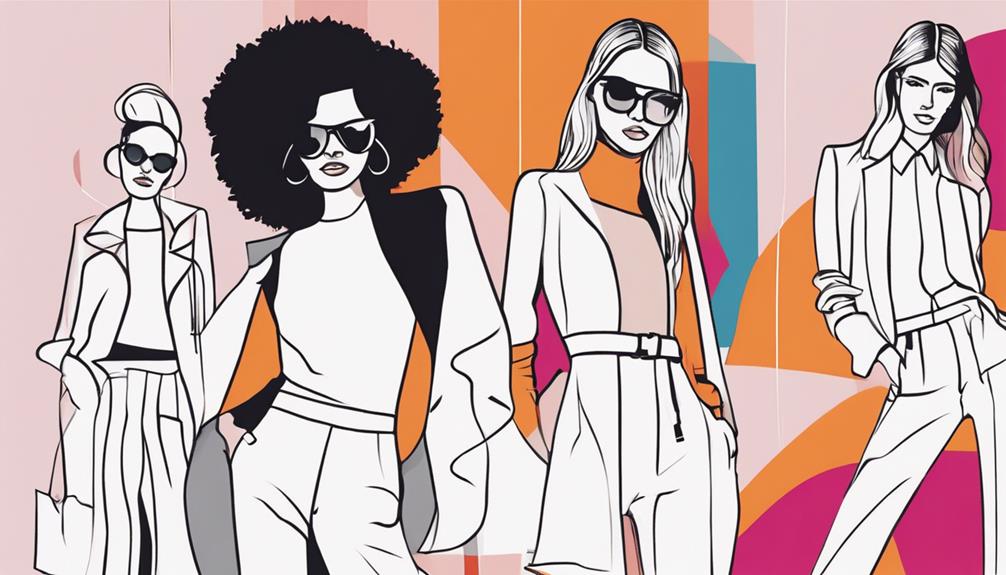
Fashion design on a global scale intricately weaves together diverse cultural influences, creative expressions, and innovative trends across major fashion capitals worldwide. Designers from fashion capitals like New York City, Paris, Milan, and London play a pivotal role in shaping global fashion trends. The globalization of fashion has encouraged a more inclusive design approach, incorporating a wide range of perspectives and aesthetics.
| Designers | Fashion Capitals | Trends |
|---|---|---|
| Innovate new styles and concepts | New York City | Sustainable fashion |
| Collaborate with international brands | Paris | Gender-neutral clothing |
| Experiment with diverse cultural inspirations | Milan | Bold colors and patterns |
International events such as fashion weeks provide a platform for designers to showcase their creativity and talent on a global stage. These events not only celebrate the diversity of fashion design but also foster collaboration and exchange of ideas among designers from different backgrounds. Global fashion trends continue to evolve, reflecting the dynamic nature of the industry and the creative vision of designers worldwide.
Cultural Significance in Design
Fashion design is deeply intertwined with cultural influences, drawing on historical contexts and global perspectives to create innovative and meaningful designs. By incorporating elements from different cultures, designers enrich their creations with diverse narratives and traditions, contributing to the richness and inclusivity of the fashion industry. This cross-pollination of ideas and styles through international collaborations and showcases fosters a more interconnected and culturally diverse design landscape.
Cultural Influences in Design
The integration of diverse cultural influences into fashion design manifests a rich tapestry of global aesthetics and traditions.
- Designers incorporate elements from various cultures to create unique collections that celebrate diversity.
- Global design is enriched by the fusion of traditions and aesthetics from different countries and regions.
- Cross-cultural collaboration between designers promotes innovation and understanding in the fashion industry.
This interplay of cultural influences not only shapes individual creations but also contributes to a more inclusive and globally aware approach to fashion design. International fashion weeks and events serve as platforms for showcasing the talent stemming from these diverse inspirations, highlighting the beauty of cross-cultural exchange in the world of fashion.
Historical Context in Fashion
Evolved from regal influences to pioneering trendsetters, historical fashion design embodies a cultural tapestry woven with innovation and individuality. The emergence of designer labels like Charles Frederick Worth's House of Worth revolutionized the industry, introducing personalized brand identities and setting the stage for future trend-setting designers. Worth himself played a crucial role in transitioning fashion from following royalty styles to establishing unique trends, laying the foundation for recognizing designers for their creations. This shift not only elevated the status of designers but also highlighted the cultural significance of historical fashion design. The evolution from generic styles to personalized, trend-setting designs marked a turning point in the industry, emphasizing creativity and individuality.
| Historical Fashion Design | |
|---|---|
| Designer Labels | Personalized Brand Identity |
| Fashion Trends | Trend-Setting Designers |
Global Perspectives in Design
Drawing inspiration from diverse global cultures and traditions, contemporary fashion design reflects a rich tapestry of cross-cultural influences and aesthetics. The globalization of fashion has catalyzed a more inclusive and diverse approach, where designers incorporate elements from various countries to showcase cultural influences. International fashion weeks serve as platforms that highlight and celebrate fashion design talent from around the world. Furthermore, collaborations between designers of different backgrounds foster cross-cultural exchange, leading to innovative design concepts and a melting pot of creativity in the fashion industry. This interconnectedness not only enriches the design process but also cultivates a deeper appreciation for the cultural significance embedded in fashion.
Technological Innovations in Fashion
Incorporating cutting-edge technological advancements into the field of fashion design has revolutionized the industry's creative processes and consumer engagement strategies. The integration of 3D modeling, digital printing, virtual reality, and artificial intelligence has enabled designers to visualize and create intricate designs with precision and efficiency. Virtual reality tools have facilitated immersive experiences for both designers and consumers, allowing for virtual fashion shows and interactive product presentations. Artificial intelligence has streamlined processes such as trend forecasting and personalized recommendations, enhancing the overall shopping experience.
Moreover, sustainable fashion practices have been further supported by technological advancements, with the use of recycled materials and eco-friendly production methods. Online design tools and software have democratized fashion design, making it more accessible to aspiring designers globally. E-commerce platforms and social media have transformed how designers interact with consumers, providing new avenues for marketing and selling their creations. As fashion designers continue to embrace technology in their creative endeavors, the industry is undergoing a significant transformation, shaping the future of fashion design.
Sustainability in Clothing Design
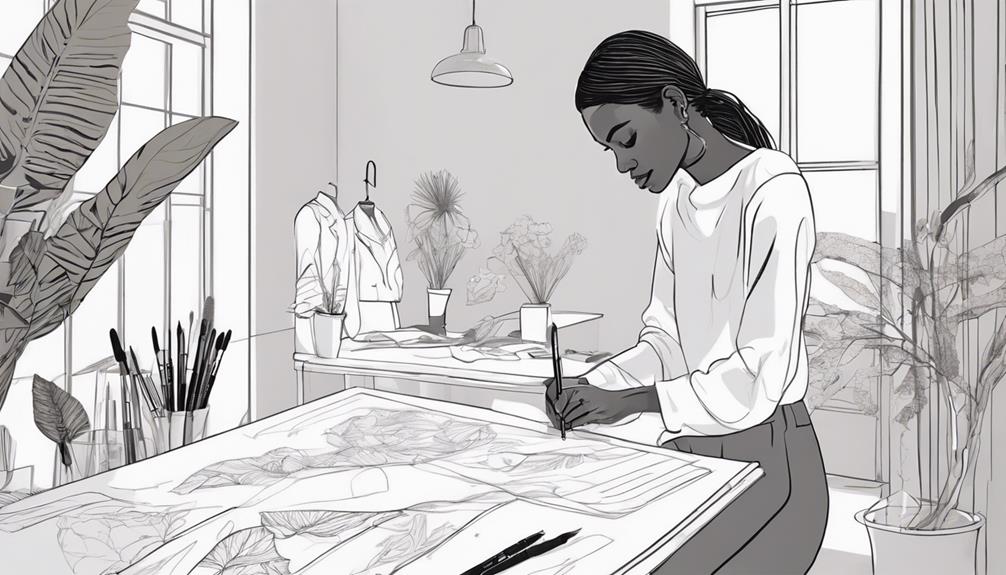
With a growing emphasis on reducing environmental impact and promoting ethical practices in the fashion industry, sustainable clothing design has become a pivotal focus for designers worldwide. Sustainable clothing design incorporates various practices to minimize harm to the environment and ensure fair treatment of workers throughout the production process. Key aspects of sustainable clothing design include:
- Using eco-friendly materials such as organic cotton, recycled polyester, and Tencel to reduce reliance on non-renewable resources and lower the carbon footprint of garments.
- Implementing strategies to reduce waste in the production process, such as upcycling fabric scraps and utilizing cutting techniques that minimize leftover materials.
- Promoting fair labor practices by ensuring workers involved in garment production receive fair wages, safe working conditions, and are treated ethically throughout the supply chain.
Future Trends in Fashion
Embracing sustainable practices and innovative technologies, the future of fashion is poised for a transformative evolution. A significant trend shaping the industry is the shift towards sustainable practices and the use of eco-friendly materials. Digital fashion shows and virtual try-on experiences are gaining momentum, offering consumers a new way to engage with fashion. Customization is becoming increasingly popular, with advancements in AI and 3D printing allowing for personalized designs tailored to individual preferences. Collaborations between fashion designers and tech companies are driving forward futuristic clothing concepts, merging fashion with cutting-edge technology. The integration of augmented reality (AR) and virtual reality (VR) is revolutionizing the shopping experience, providing immersive ways to interact with fashion products. As the industry progresses, these trends are expected to continue shaping the future of fashion design, offering new possibilities for creativity and sustainability.
Frequently Asked Questions
What Is the Definition of Fashion Design?
Fashion design is the creative process of conceptualizing, developing, and producing clothing and lifestyle accessories. This industry impacts global trends through trend forecasting and artistic expression. The definition of fashion design involves blending design elements like materials, models, styles, and colors to create innovative garments. Fashion design is a dynamic field that caters to diverse consumer needs by offering haute couture, custom-made pieces, and mass-market clothing options.
What Is the Meaning of Designer Fashion?
High fashion, akin to a masterpiece painting, embodies the epitome of luxury brands and designer labels in the fashion industry. It is showcased at prestigious runway shows, setting trends and inspiring creative expressions. Designer fashion transcends mere clothing, encapsulating a realm of artistry and innovation that caters to a discerning audience seeking unique, exquisite creations that symbolize elegance and status in the world of couture.
What Are the Concepts of Fashion Design?
Concepts in fashion design encompass creativity, drawing inspiration from current trends and pushing boundaries through innovation. Designers use sketching to visualize their ideas before moving on to the construction phase. These concepts involve a blend of artistry and functionality, where aesthetics meet practicality to create garments that resonate with the target audience. By incorporating these elements, fashion designers bring their visions to life, transforming ideas into tangible and wearable pieces of art.
What Is Fashion Design and Why It Is Important?
Fashion design is a crucial element of the global industry, driving trends and influencing cultural norms. It serves as a platform for creative expression, blending innovation and artistic vision to create unique designs. The importance of fashion design lies in its ability to shape individual identity, impact commercial success, and inspire societal change. Through a combination of creativity and strategic vision, designers play a pivotal role in shaping the way we dress and perceive ourselves.
Conclusion
In conclusion, fashion design is a multifaceted art form that encompasses creativity, innovation, and cultural influences. The industry continues to evolve with changing trends, technological advancements, and a growing emphasis on sustainability. Fashion designers play a crucial role in shaping the way we dress and express ourselves, reflecting societal values and aspirations. As the field progresses, it will be interesting to see how fashion design continues to adapt and respond to the ever-changing world around us.
